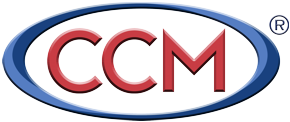About Bacoban®
Why a disinfectant with long-term effect?
With Bacoban®, the primary objective was to develop a surface disinfectant that not only disinfects but also guarantees a long-lasting effect until the next disinfection. What an improvement considering the fact that for decades the innovative power in the field of disinfectants was rather moderate! The fact that the project now came up with an effect that lasts up to 240 hours, which is a total of 10 days, was a complete surprise not only to us, but to all independent test labs and health facilities engaged in testing Bacoban®.
The consequence of these unique research results is not to change hygiene plans automatically and to perform disinfection only every 5 or 10 days, but rather to utilise this advantage to the benefit of patients, staff members and to improve infection control. But it actually does not make much difference whether the lasting disinfecting effect of Bacoban® against bacteria, fungi and viruses covers 3 or 10 days. The real benefit of such a disinfectant, if integrated into established disinfection plans, is that it ensures a significantly higher safety against the spreading of germs and viruses, thus reducing re-infection. It effectively closes the hygiene gap!
This is exactly what Bacoban® was developed for: to improve safety between the individual disinfecting steps and to give people a new tool in the control of germs and viruses.
How does Bacoban® work?
Conventional disinfectants are effective immediately – but only for a short period.
Micro-organisms are only killed during the few minutes of the duration of the active period. After that, when the disinfectant has evaporated, the area treated is again subjected to microbial strains. Until the next disinfection, a hygiene gap results, in which there can be a repeated settlement by micro-organisms.
The long-term effect of Bacoban® resolves the hygiene gap
 Bacoban® establishes an ultra-thin film with a lasting effect. The technology used here is the sol-gel process that develops a solid gel phase on the basis of a liquid phase. The biocides used to kill germs are embedded in the porous structure of the developing sponge-like sol-gel and are washed out again when coming into contact with water (bacteria, enveloped viruses and fungi are always surrounded by a water shell).
Bacoban® establishes an ultra-thin film with a lasting effect. The technology used here is the sol-gel process that develops a solid gel phase on the basis of a liquid phase. The biocides used to kill germs are embedded in the porous structure of the developing sponge-like sol-gel and are washed out again when coming into contact with water (bacteria, enveloped viruses and fungi are always surrounded by a water shell).
Effectivity
Results according to ASTM E 2180: the assessment was done in comparison of an untreated ceramic test surface with one treated with Bacoban®.
| 3 Days | 5 Days | 10 Days | ||
|---|---|---|---|---|
| Escherichia coli | > 99,997 % | > 99,994 % | > 99,996 % | Time between applications with Bacoban and the depositing of the micro-organism on the surface%: Reduction after depositing micro-organism on the surface |
| Pseudomonas aeruginosa | > 99,996 % | > 99,995 % | > 99,997 % | |
| Staphyloccocus aureus | > 99,997 % | > 99,996 % | > 99,995 % | |
| Candida albicans | > 99,997 % | > 99,992 % | > 99,997 % | |
| Aspergillus niger | > 99,995 % | > 99,992 % | > 99,837 % | |
